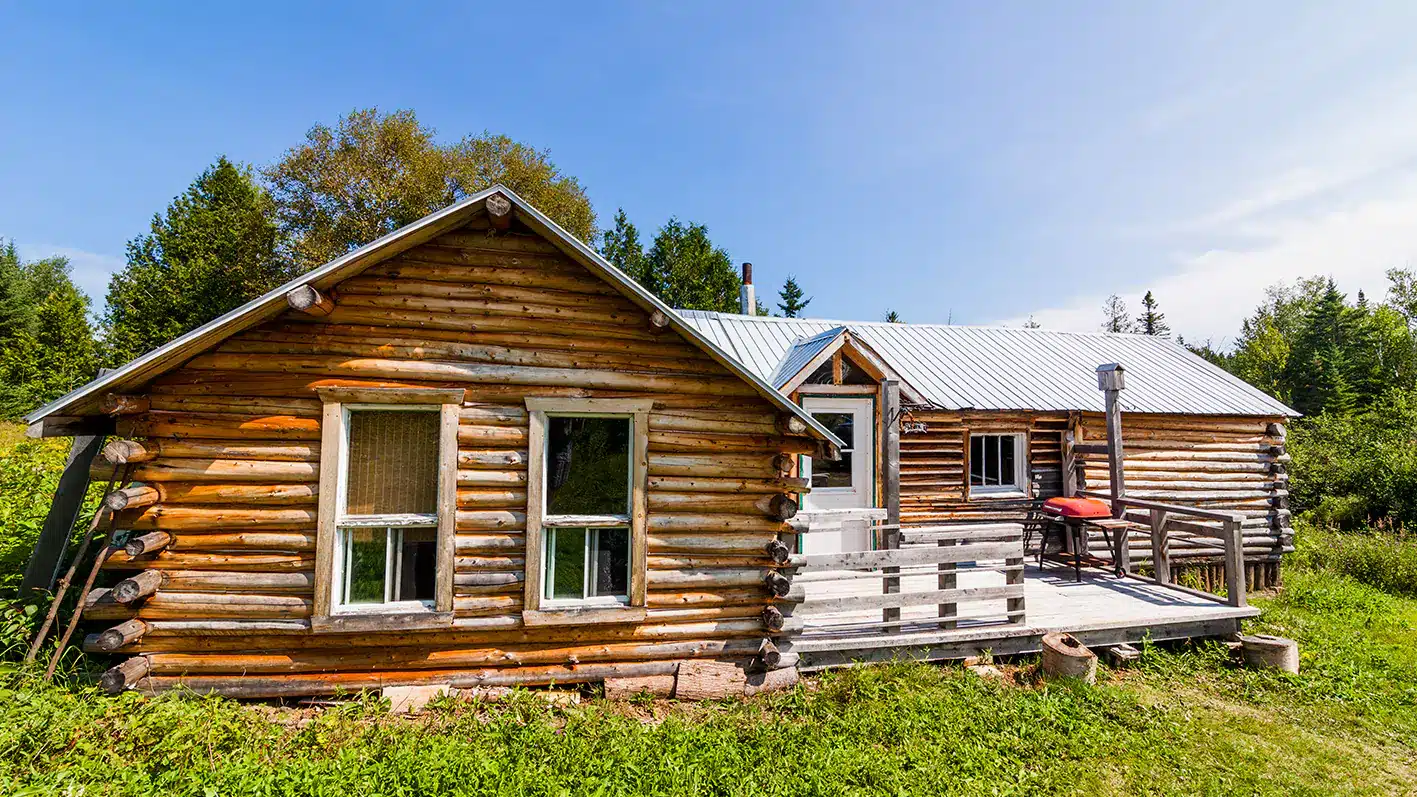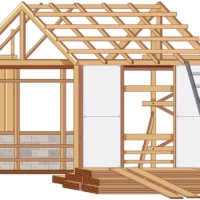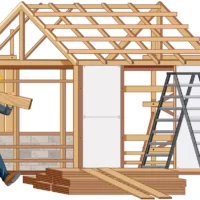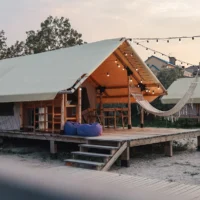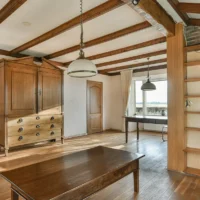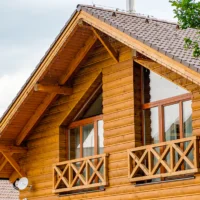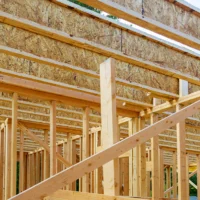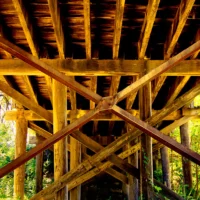Table of Contents
Introduction: Why Choose Insulated Log Cabins?
In today’s world where sustainability, energy efficiency, and wellness are becoming more critical, insulated log cabins have emerged as a leading choice for homebuyers and nature enthusiasts. These structures combine the rustic charm of traditional log homes with modern advancements in insulation technology, providing a comfortable living space throughout the year.
Whether used as a primary residence, a weekend retreat, or a home office, insulated log cabins offer more than just beautiful aesthetics. They provide a durable, energy-saving, and eco-friendly lifestyle. With the rise in energy costs and environmental awareness, insulated log cabins present an excellent opportunity for individuals looking to minimize their ecological footprint while maximizing comfort and savings.
Overview of Insulated Log Cabins
Insulated log cabins are designed to retain heat during colder months and stay cool during warmer periods. They achieve this through a combination of the natural insulating properties of wood and additional modern insulation techniques. Unlike traditional cabins, insulated versions use advanced materials and construction methods to create a highly efficient building envelope, minimizing energy loss and promoting year-round comfort.
These cabins can be custom-built or purchased as prefabricated kits, offering flexibility to meet diverse needs and budgets. Whether built in rural areas, suburban settings, or even as urban retreats, insulated log cabins are versatile and adaptable to different lifestyles.
Growing Popularity in Modern Living
The demand for insulated log cabins has seen a sharp rise, especially among those seeking a balance between modern living and a connection to nature. Several factors contribute to their growing popularity:
- Increasing interest in sustainable living
- Rising energy costs driving the need for efficiency
- Desire for healthier, more natural living environments
- Flexibility for remote work and multi-purpose usage
Moreover, insulated log cabins are not just limited to cold climates. With the right design and materials, they perform exceptionally well in all kinds of weather, making them a practical choice globally.
The Role of Insulation in Log Cabin Design
Insulation plays a crucial role in the overall performance of a log cabin. Proper insulation ensures that the interior temperature remains stable regardless of external conditions. It significantly reduces heating and cooling demands, resulting in lower energy bills and a more comfortable living environment.
In an insulated log cabin, layers of insulation are often added between the log walls or combined with specially engineered logs designed to improve thermal resistance. The type of insulation used, the quality of construction, and attention to air sealing are all key factors that influence the cabin’s energy efficiency, durability, and indoor air quality.
What Are Insulated Log Cabins?
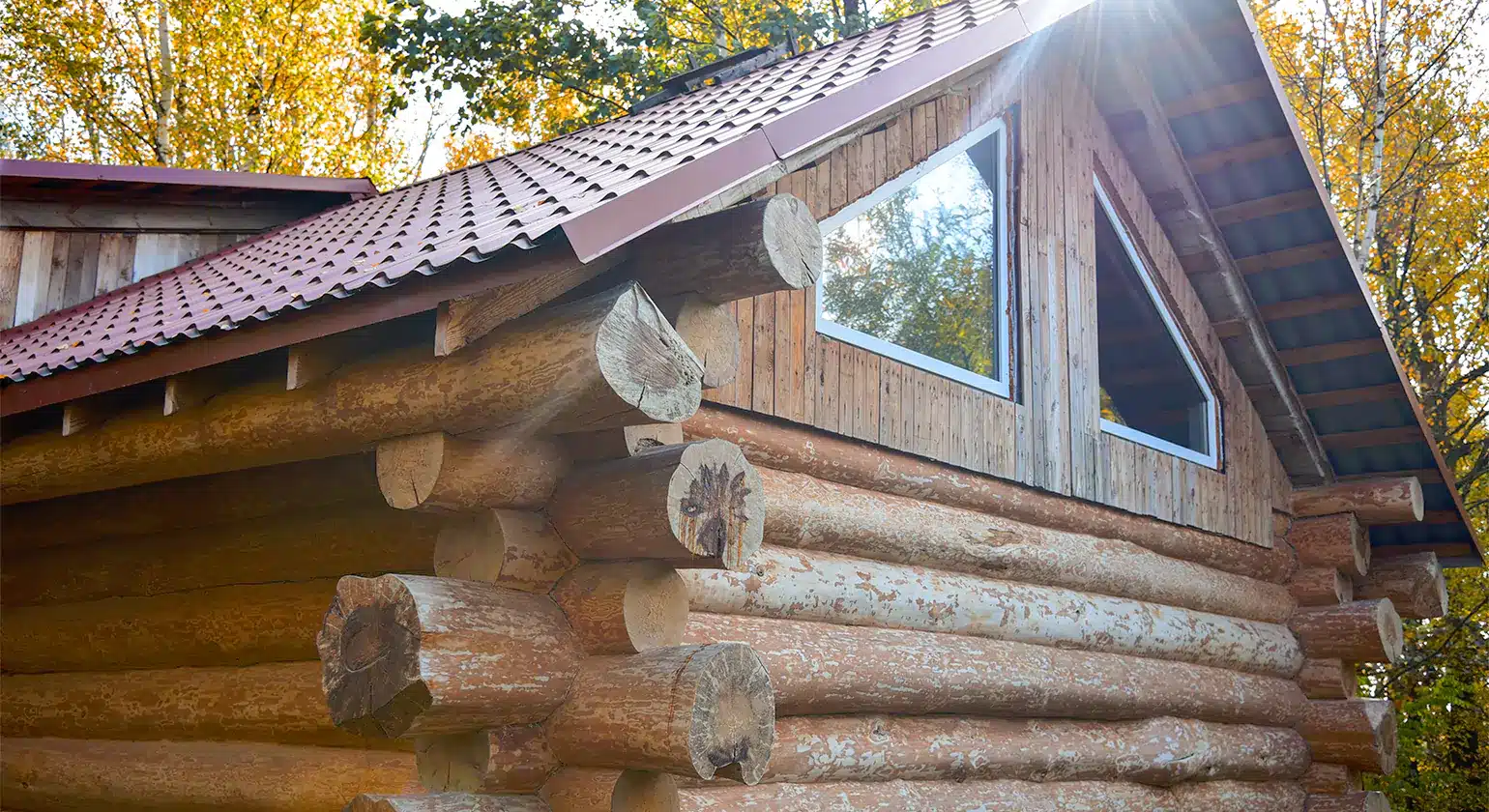
Definition and Features
An insulated log cabin is a structure made from timber that incorporates additional insulating materials to enhance its thermal efficiency. The insulation may be integrated within the logs, applied between log courses, or added to the interior or exterior of the walls.
Key features of insulated log cabins include:
- High thermal mass from thick timber walls
- Added layers of modern insulation (such as foam, fiber, or natural materials)
- Tight construction to minimize air leaks
- Superior weather resistance
- Enhanced durability compared to non-insulated structures
These cabins are often designed with sustainable practices in mind, using renewable materials and techniques that support energy conservation.
Differences Between Regular and Insulated Log Cabins
While both regular and insulated log cabins offer the aesthetic appeal of natural wood, they differ significantly in performance and comfort. Traditional log cabins rely solely on the thickness of the logs for insulation, which can be insufficient in extreme temperatures.
Insulated log cabins, however, combine the natural insulating properties of wood with additional barriers against heat transfer, resulting in:
- Lower heating and cooling costs
- Improved moisture control
- Greater year-round comfort
- Extended lifespan of the structure
- Reduced environmental impact
By addressing the limitations of traditional designs, insulated log cabins make living in a log home more practical and sustainable.
Benefits of Insulated Log Cabins
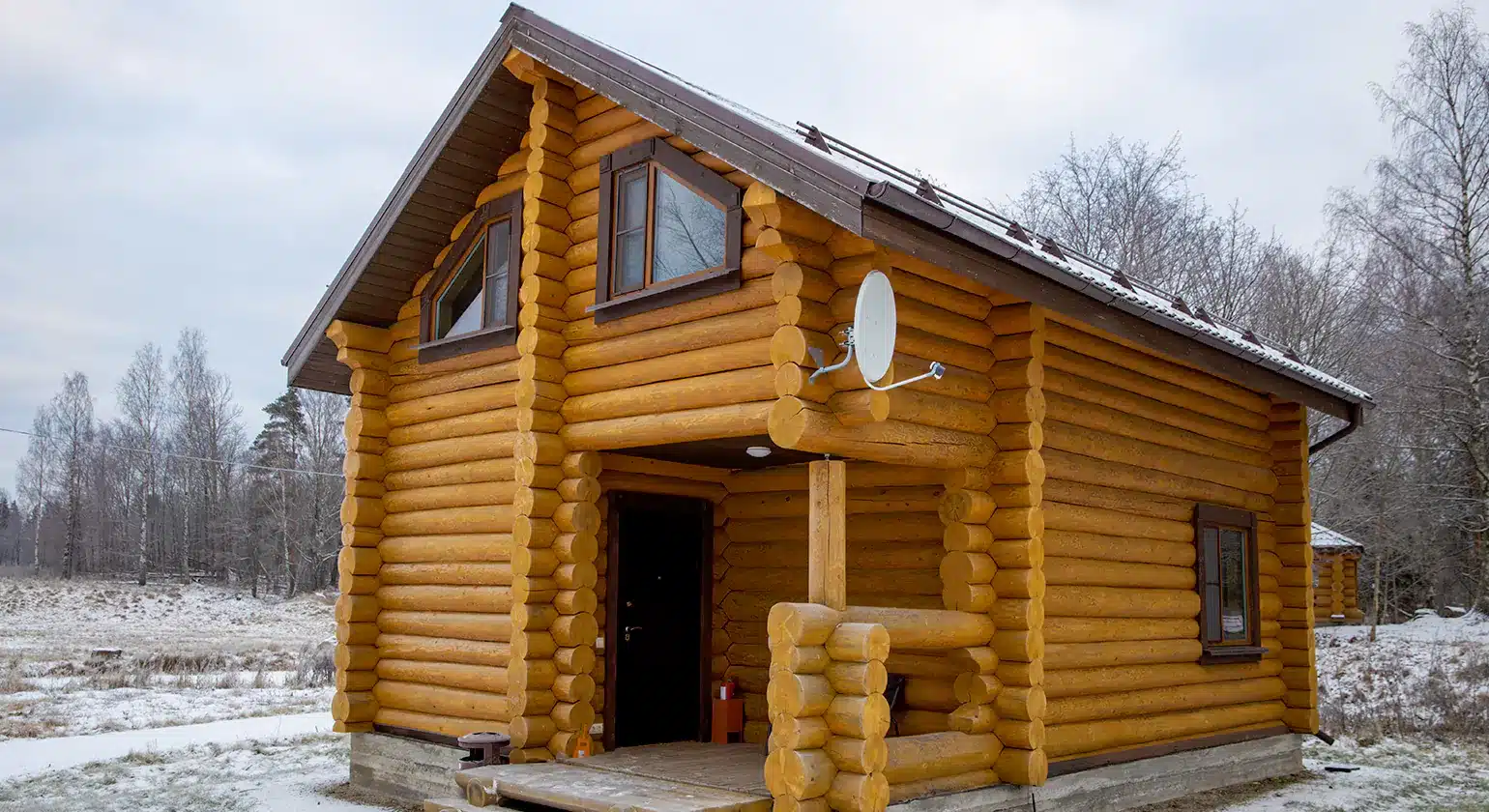
Energy Efficiency and Lower Utility Bills
One of the most significant advantages of insulated log cabins is their superior energy efficiency. Thanks to the combination of natural wood insulation and modern materials, these cabins retain heat during the winter and stay cooler in the summer, reducing the need for heating and cooling systems.
Studies show that well-insulated homes can cut energy consumption by 30 to 50 percent. Insulated log cabins consistently outperform conventional wood or concrete structures in energy savings, leading to substantial reductions in monthly utility bills over the years.
Enhanced Comfort in All Seasons
Insulated log cabins offer unparalleled comfort, regardless of the weather outside. In colder months, they maintain a warm and cozy interior, while in hotter months, they provide a cool and refreshing retreat. The steady indoor temperature reduces reliance on artificial heating and cooling, creating a naturally pleasant environment.
Additionally, the thermal mass of the logs, combined with insulation, minimizes temperature fluctuations, ensuring consistent comfort day and night.
Environmental Sustainability
Choosing an insulated log cabin is also a commitment to sustainable living. Wood is a renewable resource, and many builders source timber from responsibly managed forests. Furthermore, the energy efficiency of insulated log cabins translates to lower greenhouse gas emissions over the structure’s lifetime.
By living in an insulated log cabin, homeowners can significantly reduce their carbon footprint while enjoying a lifestyle more closely connected to the natural world.
Long-Term Cost Savings
Although the initial investment in an insulated log cabin might be higher than a non-insulated one, the long-term savings far outweigh the upfront cost. Reduced energy bills, lower maintenance requirements, and fewer repair costs contribute to substantial financial savings over the years.
Moreover, the health benefits associated with living in a natural, well-insulated environment often led to fewer medical expenses, providing another layer of financial advantage.
How Insulated Log Cabins Work
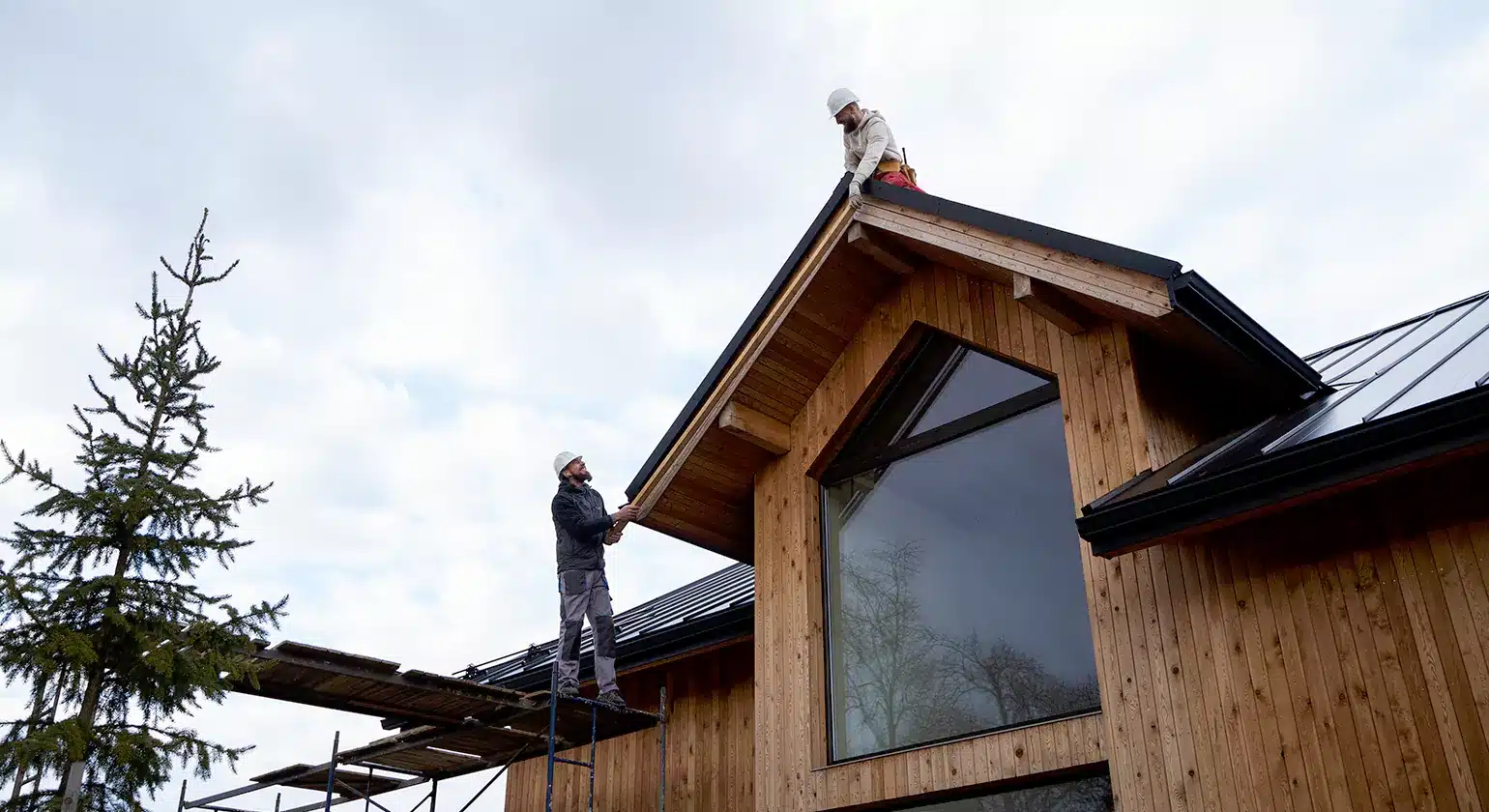
Insulated log cabins are crafted to combine the natural benefits of timber with modern insulation technologies to create energy-efficient, durable, and comfortable living spaces. These cabins use a layered approach to insulation, integrating both natural and manufactured materials to enhance thermal performance and reduce heat transfer.
Natural Insulating Properties of Wood
Wood itself is a natural insulator. Unlike metal or concrete, timber has a low thermal conductivity, which means it resists the flow of heat. This characteristic helps maintain a stable indoor climate. The cellular structure of wood contains air pockets, which slow down the passage of heat, making it an ideal material for energy-conscious construction.
Furthermore, thicker logs improve thermal resistance. Round logs and square logs both perform well, but D-shaped and laminated logs often come with better structural and thermal performance due to engineered design. The thermal mass of the wood also plays a key role, helping store heat during the day and releasing it slowly during colder periods.
Additional Insulation Materials Used
While wood provides a good base, modern insulated log cabins enhance this further by incorporating additional insulation materials. These materials are added within the log walls, between structural layers, or on the inside of the cabin walls. Common options include:
- Rigid foam boards
- Spray foam insulation
- Fiberglass batts
- Natural alternatives like sheep wool or hemp insulation
These materials reduce the transfer of heat between the cabin’s interior and the external environment, allowing for consistent indoor temperatures regardless of outdoor weather conditions.
Heat Retention and Thermal Mass Explained
Thermal mass is the ability of a material to absorb and store heat. Logs have high thermal mass, meaning they absorb heat from the sun or internal heating during the day and release it slowly over time, particularly when the outside temperature drops at night. This function stabilizes indoor temperatures and minimizes the need for constant heating or cooling.
When combined with airtight construction and supplementary insulation, insulated log cabins can maintain a comfortable indoor environment year-round. This makes them especially appealing for homeowners in regions with wide temperature swings between day and night or between seasons.
Types of Insulated Log Cabins
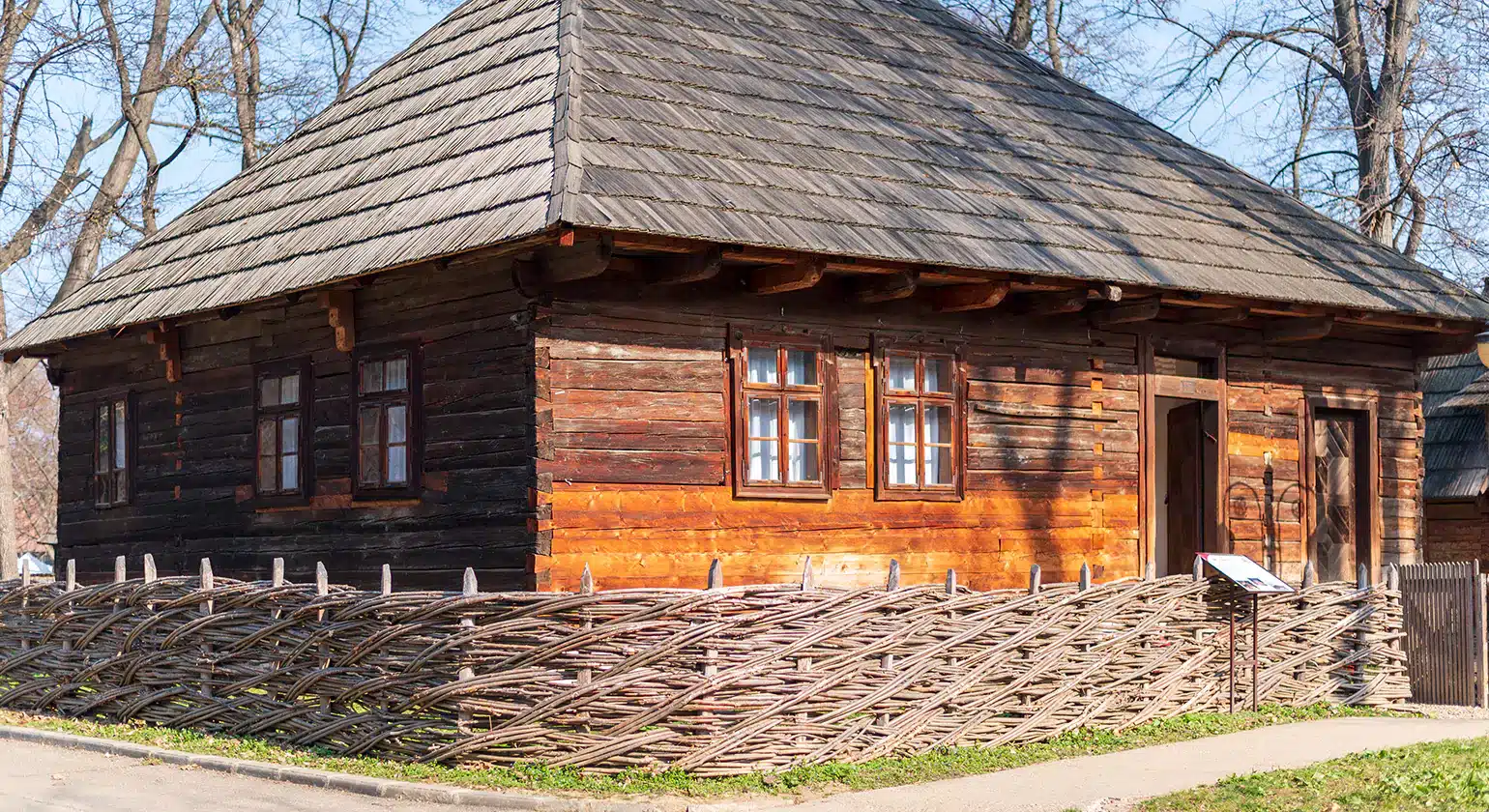
Insulated log cabins are versatile and serve many purposes, from residential homes to workspaces and vacation retreats. Here are the most common types:
Residential Log Cabins
Many people now choose insulated log cabins as their primary residences. These structures provide the comforts of a modern home with the rustic charm of a traditional log house. Because of their thermal efficiency and durability, they are ideal for year-round living. Custom layouts, plumbing, and electrical options make residential cabins functional and beautiful.
Garden Offices and Studios
With the rise of remote work and creative side businesses, garden log cabins have gained popularity as offices, art studios, or hobby spaces. Insulated versions allow for comfortable use throughout all seasons, even during winter. They also offer privacy and separation from the main home, improving productivity.
Holiday Cabins and Vacation Homes
Many people invest in insulated log cabins as vacation homes or weekend getaways. These cabins can be placed in rural, forested, or lakeside locations to create peaceful retreats. Insulation ensures comfort without the need for excessive heating or cooling, making them cost-effective for part-time use.
Off-Grid and Eco Cabins
For those seeking a sustainable, minimalist lifestyle, off-grid insulated log cabins are an excellent option. Built with renewable materials and powered by solar or wind energy, these cabins minimize environmental impact. Enhanced insulation reduces the need for large energy systems, making them ideal for remote or eco-conscious living.
Insulated Log Cabins vs Traditional Homes
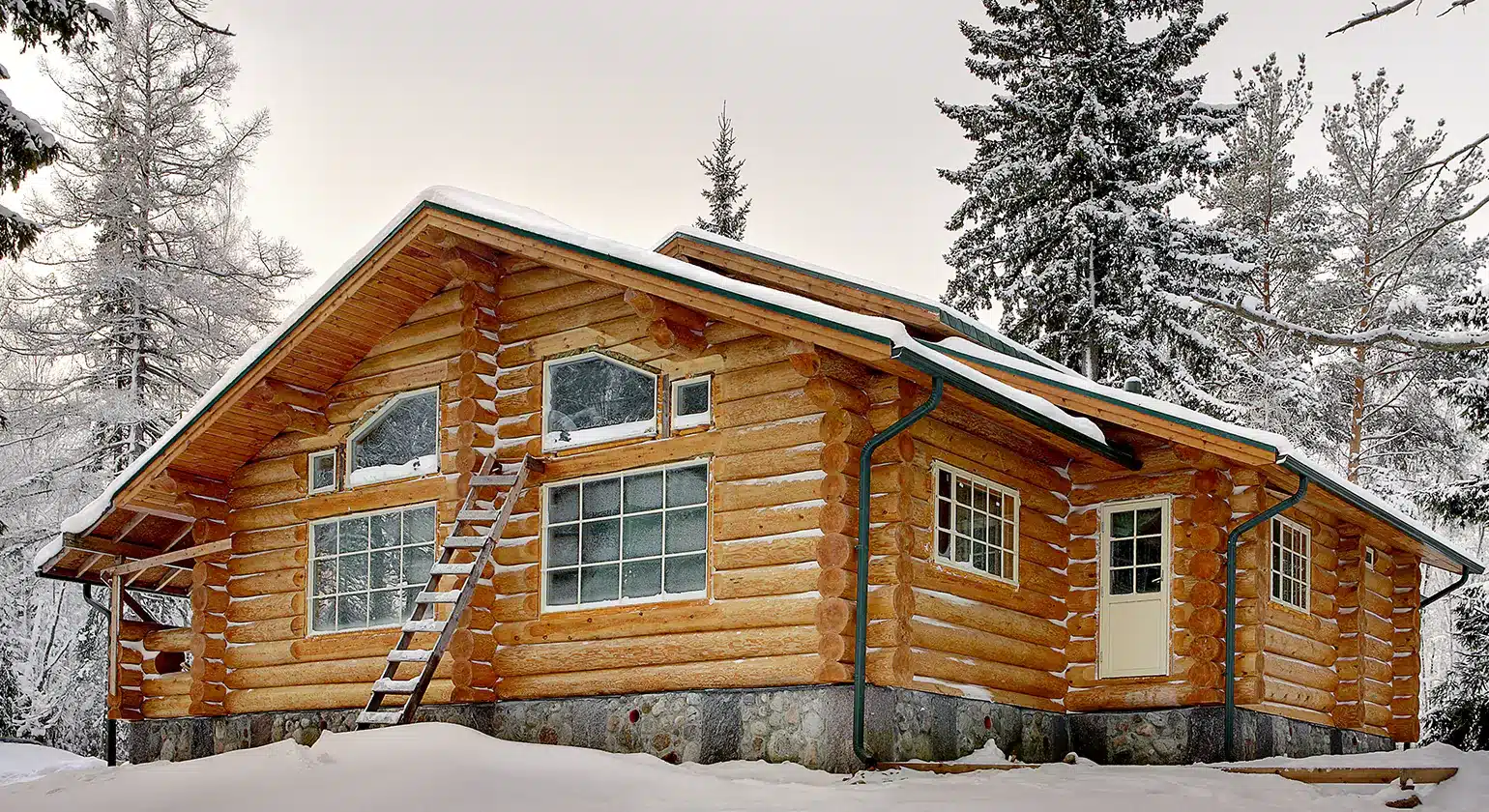
While traditional brick or concrete homes are more common in urban areas, insulated log cabins present several advantages that make them highly competitive alternatives.
Energy Usage Comparison
Insulated log cabins are typically more energy-efficient than traditional homes. The combination of natural wood insulation, added insulating layers, and airtight construction results in lower heat loss and reduced energy consumption. According to industry studies, insulated log cabins can cut heating and cooling needs by up to 40–50% compared to traditional structures.
Traditional homes often require more active climate control systems and are more prone to air leaks, especially if poorly constructed or maintained. The tight building envelope in insulated log cabins, combined with high thermal mass, makes them superior in maintaining comfortable temperatures with less energy input.
Construction Costs and Timelines
The cost of building an insulated log cabin varies depending on size, materials, and design complexity. In some cases, cabins may cost slightly more upfront than traditional timber-frame or brick homes due to the premium quality logs and insulation materials used. However, the construction timeline is often shorter, especially when using pre-fabricated kits or modular designs.
Additionally, many cabins can be assembled by smaller crews or even as DIY projects, which reduces labor expenses. Over the long term, the lower operational costs from energy savings and minimal maintenance often offset the initial investment.
Maintenance and Durability
One of the key benefits of insulated log cabins is their durability. When constructed with quality timber and maintained properly, log cabins can last generations. Unlike traditional homes that may experience issues like rot, pest intrusion, or water damage, log cabins with good insulation and protective finishes resist these threats effectively.
Insulated log cabins also require less frequent painting, repairs, or replacements. With the right design and protective treatments, wood logs can withstand harsh weather conditions, UV exposure, and moisture. The insulation materials used in these cabins are generally low-maintenance and retain their performance over time.
Health and Wellness Advantages of Insulated Log Cabins
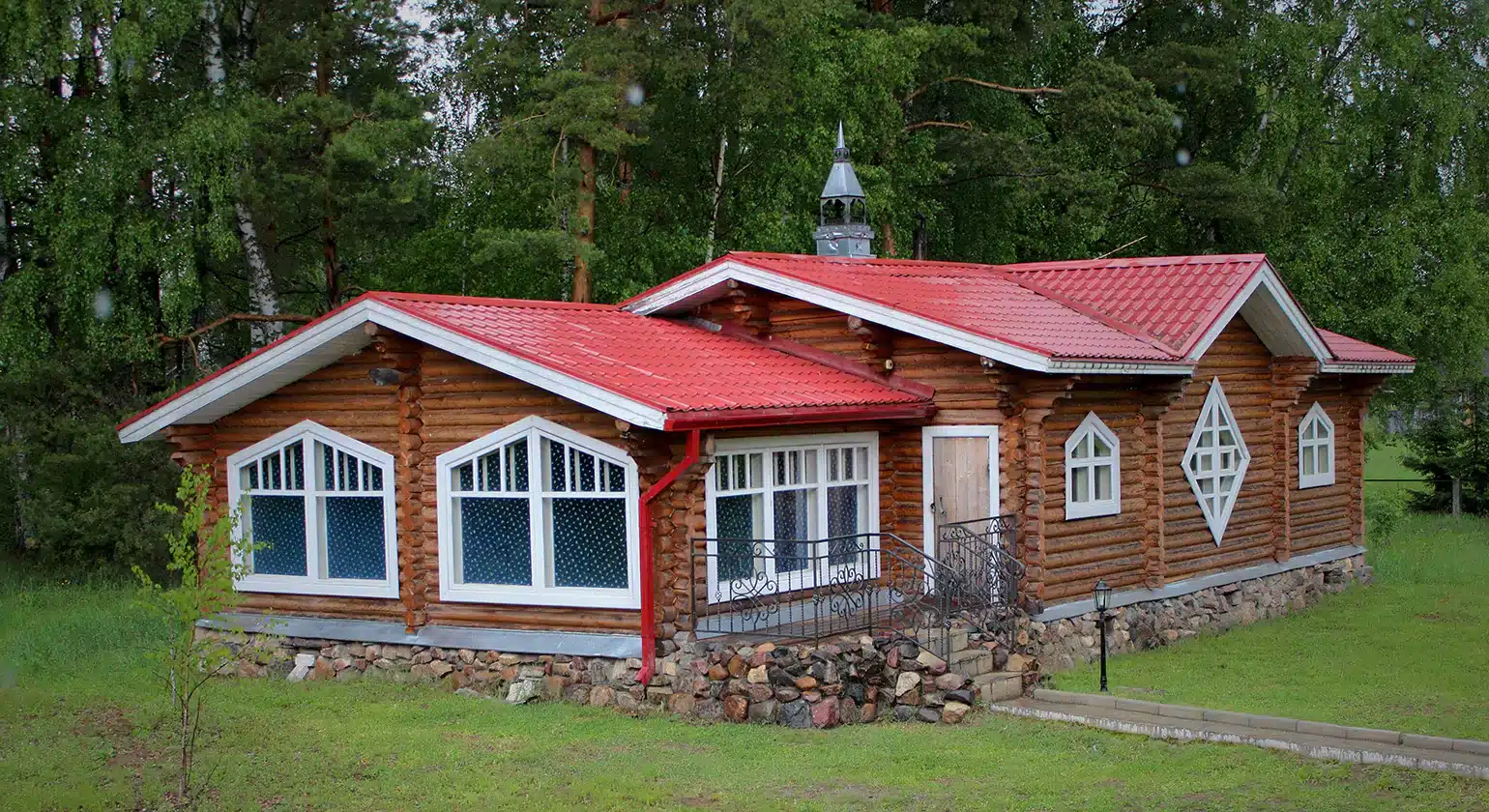
Insulated log cabins aren’t just about energy efficiency and durability—they also provide significant health and wellness benefits. The combination of natural materials, consistent indoor temperatures, and a tranquil setting helps improve both physical and mental well-being. More people are turning to insulated log cabins not only for sustainability but also for their positive impact on everyday life.
Better Indoor Air Quality
One of the most overlooked benefits of insulated log cabins is their superior indoor air quality. Unlike traditional homes that rely on synthetic building materials, insulated log cabins are made primarily from natural timber. Wood is non-toxic and does not release harmful chemicals or volatile organic compounds (VOCs) into the air. When properly insulated, these cabins also reduce drafts and dust infiltration, leading to cleaner and more breathable air indoors.
Additionally, the insulation techniques used in log cabins—such as vapor barriers and breathable membranes—help control humidity levels. This lowers the risk of mold and mildew development, both of which can contribute to allergies and respiratory conditions.
Reduction in Respiratory and Stress-Related Issues
Thanks to their breathable materials and clean air environment, insulated log cabins help reduce the likelihood of respiratory issues such as asthma, sinusitis, and bronchitis. People who suffer from dust allergies or chemical sensitivities often find relief when living in wooden, naturally insulated environments.
Beyond physical health, insulated log cabins also offer a sense of calm and peace. The warm aesthetics of timber interiors, along with stable indoor temperatures, create a cozy and comforting atmosphere. Unlike homes plagued by uneven heating or cold drafts, insulated cabins promote better sleep and lower levels of stress-related hormones. Studies show that natural settings and wooden interiors help decrease anxiety and support mental clarity.
Connection with Nature and Mental Wellbeing
Log cabins are often located in scenic, natural surroundings—mountains, forests, lakesides, or countryside areas. This immediate access to nature is proven to support better mental health. Regular exposure to green space is associated with lower rates of depression, improved mood, and increased cognitive function.
Insulated log cabins enhance this experience by making it possible to enjoy these benefits year-round, even in cold seasons. The warm interior environment provides a perfect setting for mindfulness, relaxation, and connection with the outdoors, without sacrificing comfort or safety.
Cost of Building and Maintaining an Insulated Log Cabin
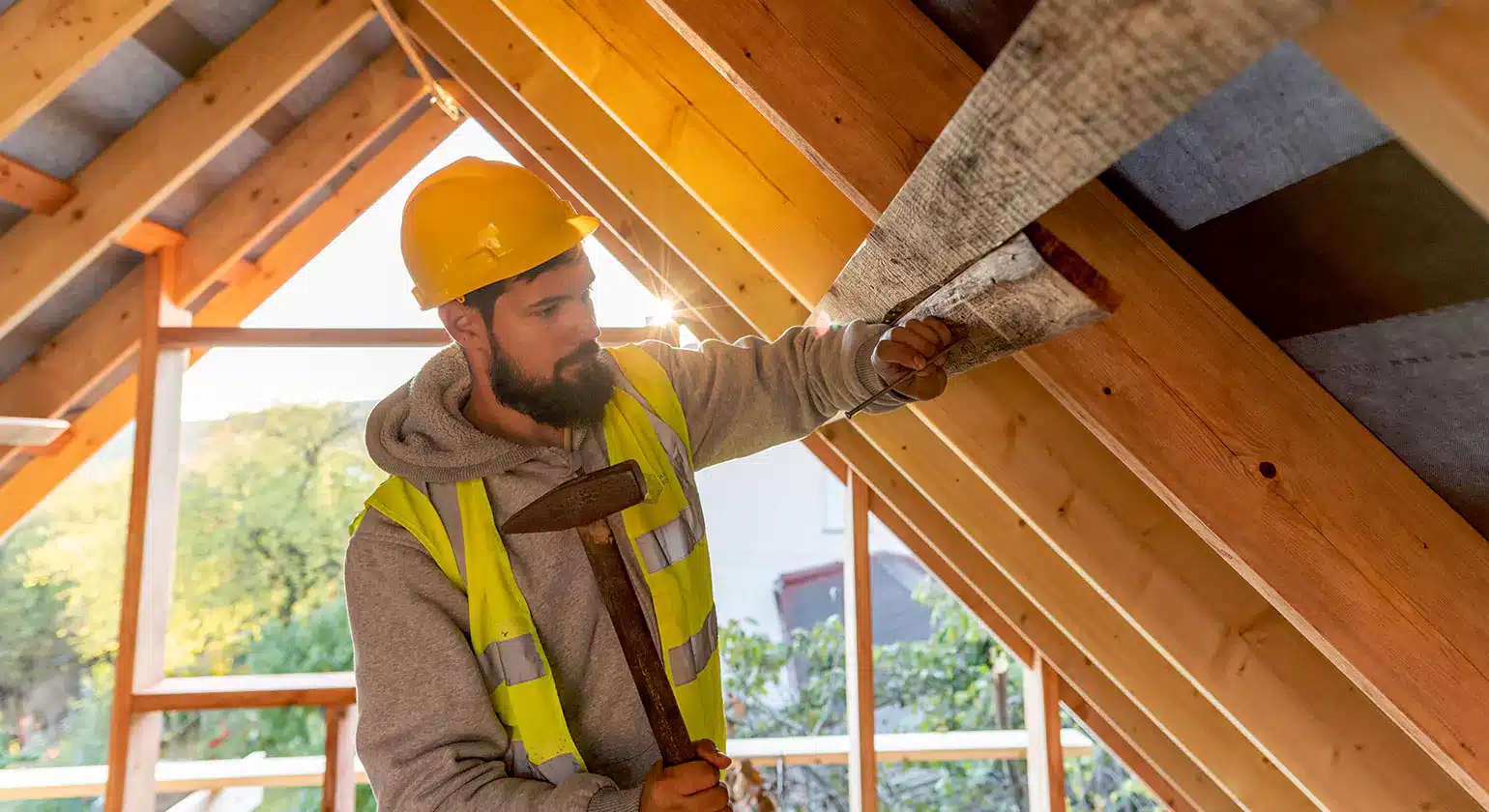
For those considering a switch to this style of living, understanding the cost implications is essential. While the initial cost of building an insulated log cabin can vary, the long-term savings in energy, maintenance, and health-related expenses make it a sound financial investment.
Price Breakdown: Materials, Labor, Insulation
The cost of building an insulated log cabin depends on several factors, including size, type of wood used, location, and level of customization. On average, the price per square foot can range from $150 to $300.
- Materials: High-quality logs like cedar, pine, or spruce can be more expensive upfront, but they offer better durability and thermal performance.
- Labor: Depending on the complexity of the design and whether you’re using a pre-fabricated kit, labor costs can vary. Skilled carpenters or log home specialists are essential for airtight construction.
- Insulation: Internal and external insulation materials such as foam boards, fiberglass, or eco-friendly wool can add to the total cost, but drastically reduce operational expenses over time.
Long-Term Return on Investment
Insulated log cabins offer excellent ROI. Their energy-efficient design leads to lower utility bills, especially in cold climates where heating costs are significant. In many cases, cabin owners report energy savings of 30–50% compared to traditional homes.
Moreover, log cabins built with proper insulation have fewer maintenance issues, lower repair costs, and require less frequent upgrades. They also retain value well and can be marketed as luxury or eco-friendly properties—appealing to future buyers.
Budget-Friendly Options
For those on a tighter budget, there are affordable ways to own an insulated log cabin:
- Opt for smaller footprints like tiny homes or modular designs.
- Use locally sourced wood to reduce transportation costs.
- Choose DIY kits with pre-cut logs and instruction manuals.
- Focus on essential insulation features first and upgrade over time.
These strategies help reduce upfront costs while still enjoying the primary benefits of an insulated log cabin.
Insulation Techniques for Log Cabins
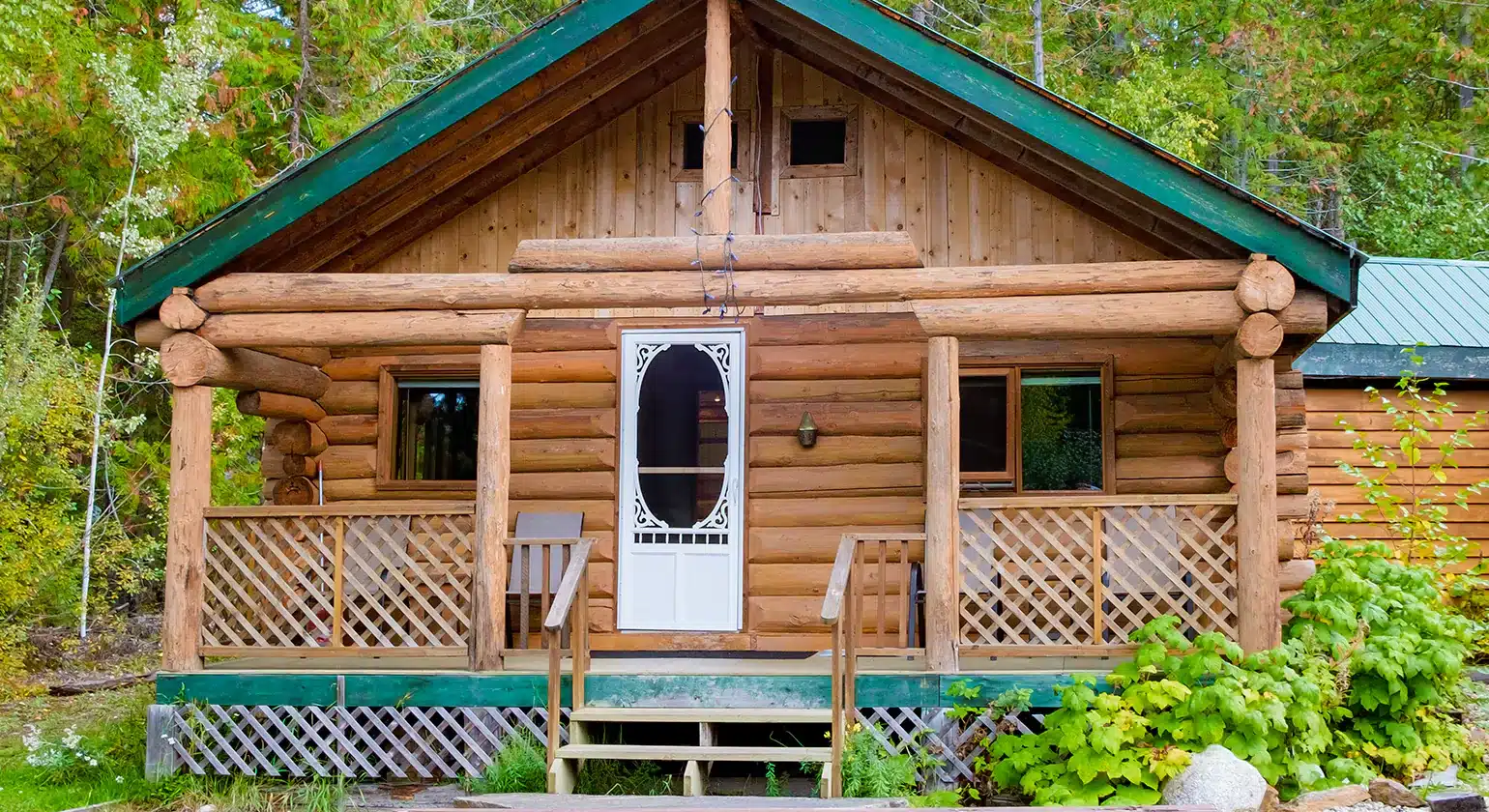
Proper insulation is at the heart of an efficient and comfortable log cabin. Several techniques can be used to improve thermal performance and protect against moisture, air leaks, and temperature swings.
Internal vs External Insulation
Internal insulation involves adding insulating materials to the inside of the log walls. This method is often used in renovation projects or for cabins that want to maintain their exterior wood appearance.
External insulation, on the other hand, places the insulating layer on the outside of the cabin. It offers better thermal performance by minimizing thermal bridging and allows for continuous insulation. The exterior can then be finished with wood cladding or weather-resistant panels to maintain aesthetics.
Both methods have pros and cons. Internal insulation may limit interior space and alter the cabin’s look, while external insulation can be more effective but costlier. A hybrid approach may offer the best balance.
Breathable Membranes and Vapor Barriers
One of the keys to effective log cabin insulation is moisture management. Breathable membranes allow moisture to escape while preventing water ingress, protecting the logs and insulation layers from rot.
Vapor barriers, typically installed on the warm side of the insulation, stop condensation from forming within the walls. This is crucial in cold climates where warm interior air can condense when it contacts colder surfaces, leading to mold and decay.
Together, these systems maintain healthy indoor air quality and prolong the life of the building.
Common Mistakes to Avoid
- Skipping air sealing: Even well-insulated cabins will lose heat if there are air leaks.
- Improper insulation materials: Using non-breathable or low-quality materials can lead to moisture problems.
- Neglecting ventilation: Good insulation must be paired with proper ventilation to manage indoor air quality.
- Overlooking thermal bridges: Failing to insulate corners, joints, or roof intersections can reduce overall performance.
Best Insulated Log Cabin Kits for 2025
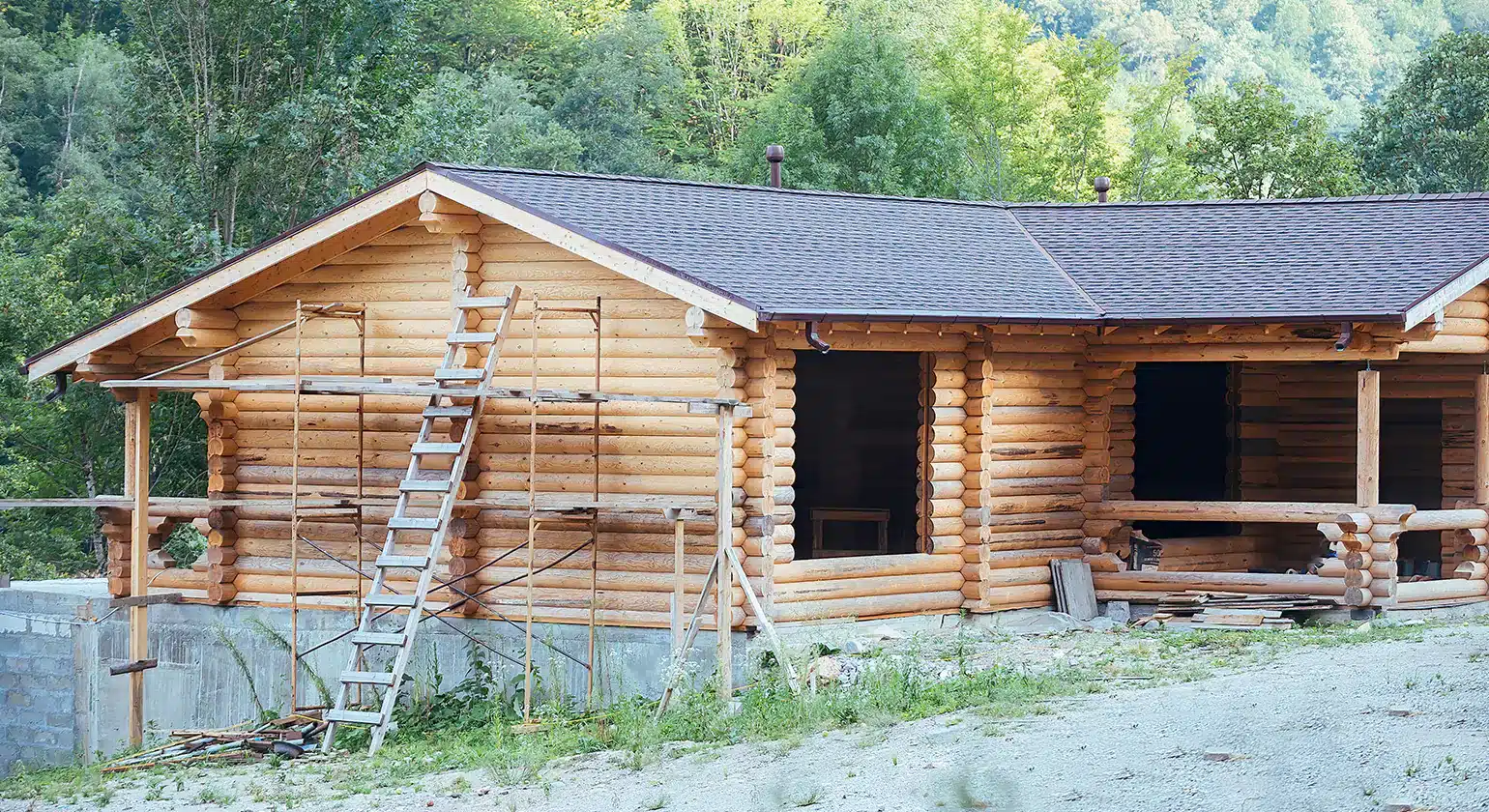
Insulated log cabin kits are increasingly popular for homeowners seeking energy efficiency, comfort, and long-term value. In 2025, several manufacturers have refined their offerings to include eco-friendly materials, customizable layouts, and advanced insulation systems that meet today’s building standards. Whether you’re planning a weekend getaway cabin or a permanent residence, investing in the right kit can save time, money, and future maintenance costs.
Top Brands and Suppliers
When choosing an insulated log cabin kit, it’s essential to work with a reputable brand known for quality craftsmanship and energy-efficient solutions. Some of the top log cabin kit providers in 2025 include:
- Honka Log Homes – Known for sustainable timber use and superior insulation in harsh climates.
- Southland Log Homes – Offers customizable kits for residential, vacation, and small office use with strong insulation ratings.
- Battle Creek Log Homes – A favorite for traditional log aesthetics and thick wall profiles that naturally support better thermal resistance.
- eLogHomes – Offers pre-engineered insulated log cabin kits with optional upgrades for solar integration and thermal mass efficiency.
Each of these companies provides multiple sizes and designs, from tiny cabins to large family lodges, and supports energy-efficient add-ons for year-round living.
Features to Look For in a Kit
A quality insulated log cabin kit should include the following key components:
- High R-value Insulation: Look for kits that offer insulated wall systems with R-values of 20 or higher.
- Pre-cut Logs or SIPs (Structural Insulated Panels): These save time during construction and ensure tighter building envelopes.
- Weatherproof Roofing Systems: Metal or composite roofing with underlayment that resists moisture and wind uplift.
- Thermal Breaks and Vapor Barriers: Crucial for preventing heat loss and controlling humidity.
- Energy-efficient Doors and Windows: Double or triple-glazed windows and sealed doors reduce thermal exchange and noise infiltration.
Choosing a kit that incorporates these features helps improve comfort, reduce utility bills, and maintain structural durability for decades.
Pros and Cons of DIY vs Professional Installation
Many log cabin kits are marketed as DIY-friendly, but it’s important to weigh the pros and cons of self-builds versus hiring professionals.
DIY Installation Pros:
- Lower labor costs
- Flexible construction timeline
- Personal satisfaction and control over the build
DIY Installation Cons:
- Requires construction knowledge and tools
- Time-intensive
- Risk of errors that can reduce insulation effectiveness
Professional Installation Pros:
- Faster and more reliable construction
- Proper air sealing and insulation installation
- Warranty and post-build support
Professional Installation Cons:
- Higher upfront costs
- Less hands-on involvement
For homeowners without prior building experience, a hybrid approach—where professionals handle the foundation, insulation, and weatherproofing while you complete the interior—offers a balance of savings and quality.
Sustainable and Eco-Friendly Cabin Living
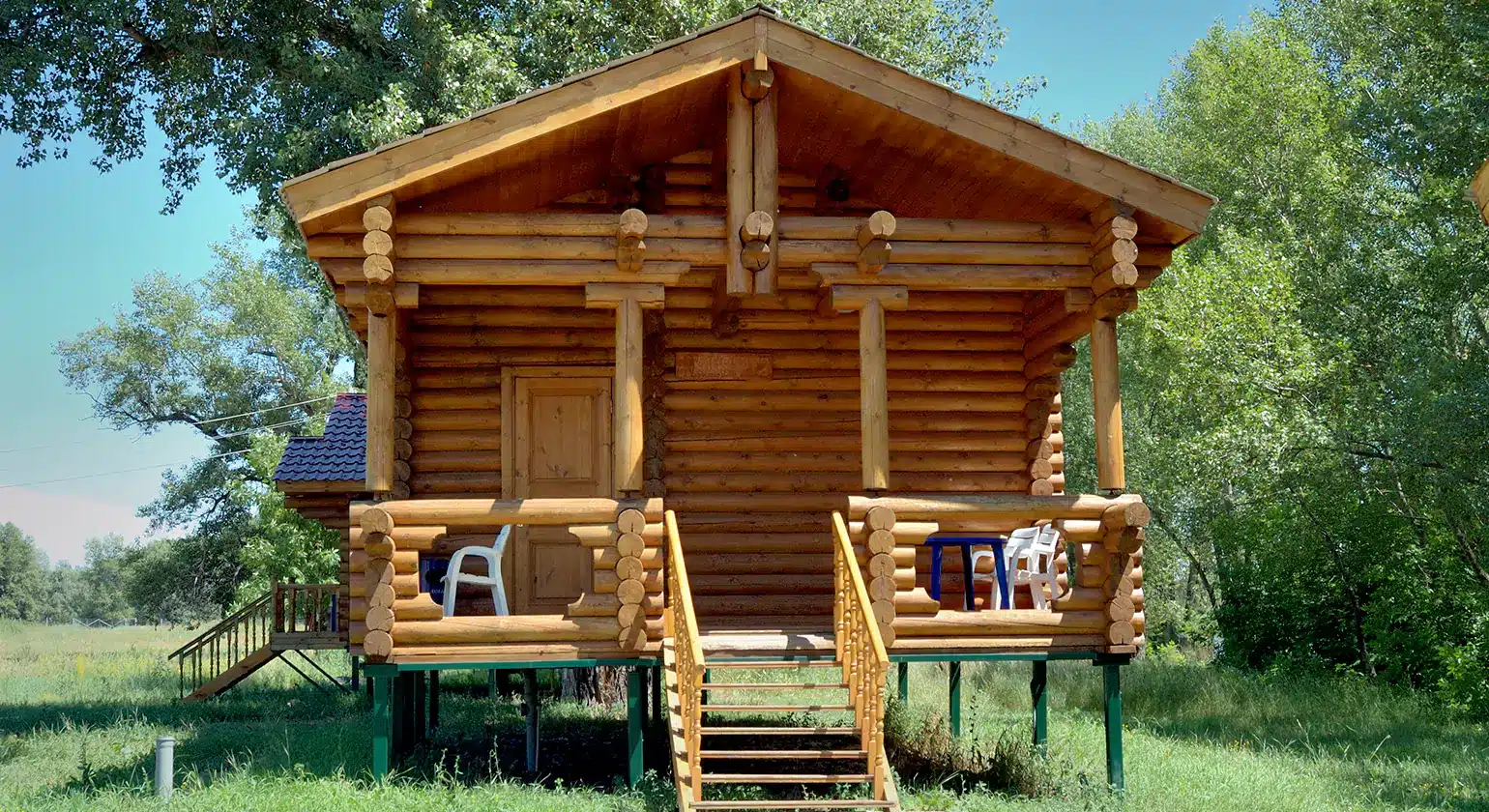
Insulated log cabins naturally align with eco-conscious living, especially when built using renewable resources and off-grid systems. They offer a lower environmental impact while providing all the comforts of a modern home.
Renewable Materials
The best insulated cabins are built using sustainably harvested wood, such as FSC-certified pine or cedar. Wood is not only renewable but also acts as a carbon sink, locking in carbon dioxide and reducing your overall footprint.
Some manufacturers also offer kits that include recycled or repurposed insulation materials, such as cellulose or denim-based panels. These choices are not only eco-friendly but also reduce landfill waste.
Solar Panels and Off-Grid Features
Many insulated log cabins are designed with solar energy compatibility, making it easier to live off-grid. Solar panels, combined with energy-efficient lighting, water heating, and backup battery storage, allow for near-total independence from traditional utilities.
Other off-grid features include:
- Rainwater harvesting systems
- Composting or waterless toilets
- Greywater recycling
- Wood-burning stoves or pellet heaters
These systems work seamlessly with a well-insulated building envelope, ensuring year-round livability with minimal environmental impact.
Minimizing Carbon Footprint
By combining natural materials, renewable energy sources, and energy-efficient insulation, insulated log cabins significantly reduce greenhouse gas emissions. Choosing a compact design, sourcing local materials, and using low-VOC finishes can further reduce your carbon footprint.
In addition, the long lifespan of log cabins, combined with low maintenance requirements, ensures fewer resources are needed over time compared to standard stick-frame homes.
Design and Customization Options
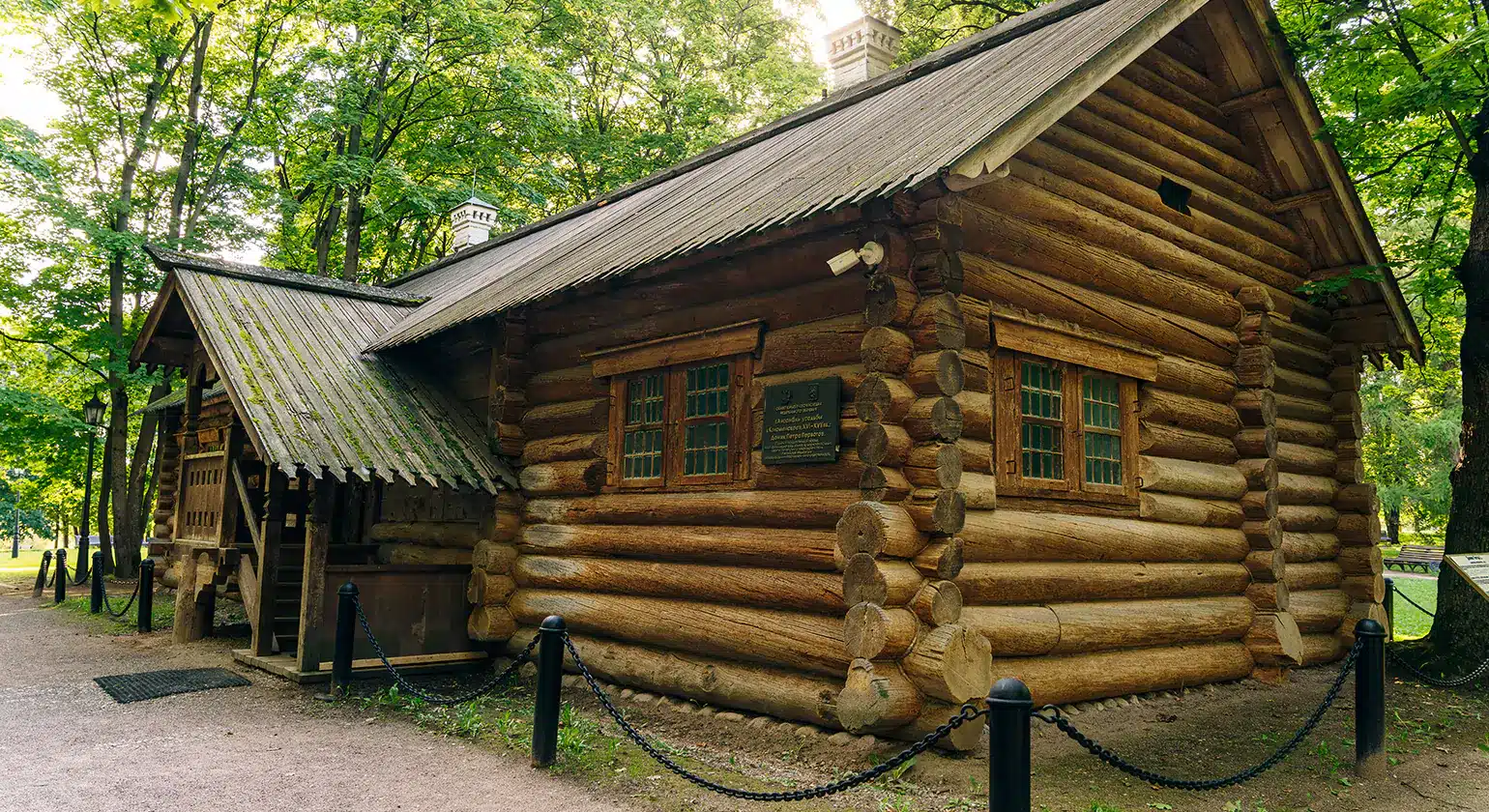
Insulated log cabins are not one-size-fits-all. Whether you’re building a minimalist studio or a rustic family retreat, you can personalize nearly every aspect of the design for style and functionality.
Interior Layouts for Efficiency and Style
Smart layouts make the most of every square foot. Open floor plans with lofts or multipurpose areas maximize natural light and airflow, which works well with the natural insulating properties of wood.
Popular interior layout options include:
- Open-plan kitchens and living rooms
- Lofted bedrooms with skylights
- Integrated storage in walls and under stairs
- Mudrooms for wet gear and firewood
These layouts help maintain energy efficiency by optimizing heat flow and reducing the need for excessive partitioning.
Log Cabin Decor and Furniture Ideas
The cozy, natural aesthetic of a log cabin pairs beautifully with rustic or modern décor. For optimal comfort and style:
- Use wooden or reclaimed furniture to match the cabin’s structure.
- Add layered textiles—rugs, throws, and cushions—for warmth and texture.
- Choose LED lighting for low energy consumption and ambiance.
- Incorporate natural elements like stone fireplaces, live-edge tables, or plant displays to enhance the connection to nature.
This style is not only charming but supports the health-focused, sustainable living values that log cabin enthusiasts prioritize.
Outdoor Space Planning (Decks, Gardens, etc.)
Outdoor living is a major draw for log cabin owners. Extend your insulated cabin’s functionality and enjoyment with smart exterior planning:
- Covered decks provide sheltered outdoor seating and extend your living space year-round.
- Edible gardens or herb beds promote self-sufficiency and wellness.
- Composting areas help manage food and garden waste sustainably.
- Pathways and fire pits enhance the natural charm while providing practical outdoor amenities.
By integrating these spaces into your design, you create a holistic, enjoyable, and eco-conscious lifestyle.
Year-Round Use and Weather Resistance
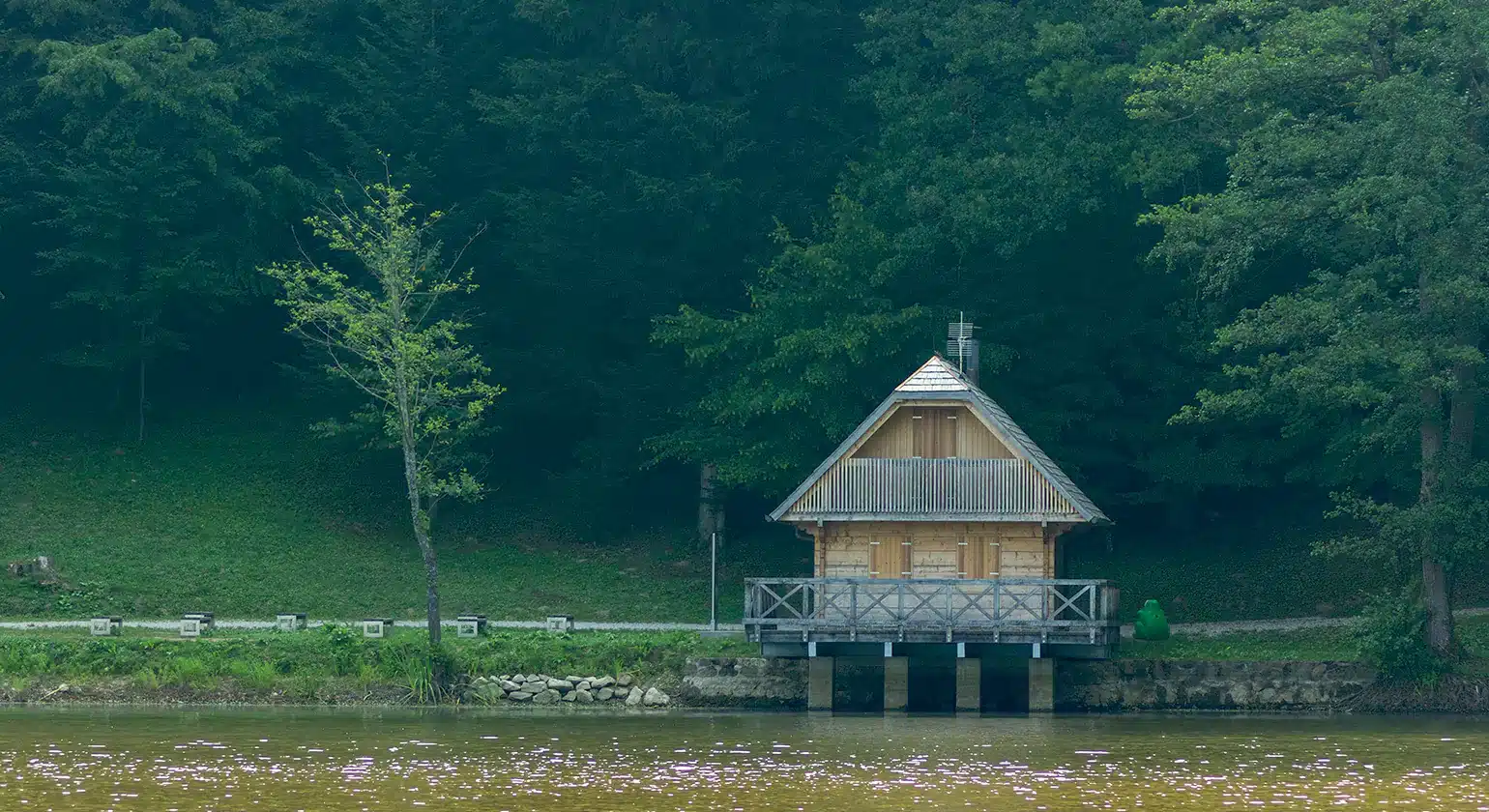
Insulated log cabins are designed for all-season living, offering superior protection from extreme temperatures, moisture, fire, and high winds. This makes them ideal not only for holiday getaways but also for permanent residence in remote or climate-challenging locations.
Insulation for Cold Winters and Hot Summers
One of the primary reasons to choose an insulated log cabin is its excellent thermal performance throughout the year. Unlike traditional timber structures, modern insulated cabins incorporate:
- High R-value insulation in walls, roofs, and floors
- Thermal breaks to prevent heat loss through structural elements
- Double or triple-glazed windows for improved energy retention
In winter, this helps retain warmth, reducing heating bills and keeping the cabin cozy even in sub-zero temperatures. During summer, insulation prevents heat penetration, maintaining cooler indoor temperatures without over-reliance on air conditioning. The result is year-round comfort and significant energy savings.
Moisture, Fire, and Wind Resistance
A key concern for cabin owners is resilience against natural elements. Insulated log cabins are engineered to resist:
- Moisture: Breathable membranes, vapor barriers, and moisture-resistant insulation prevent condensation buildup, which could otherwise lead to mold, rot, or structural decay.
- Fire: Many insulated cabins now include fire-resistant materials such as mineral wool or specialized treated timber, meeting safety standards in wildfire-prone regions.
- Wind: A well-constructed insulated log cabin can withstand strong winds thanks to interlocking logs, steel reinforcements, and solid anchoring foundations.
These features make insulated cabins suitable for a wide variety of locations—from mountain retreats to coastal regions—where durability and low maintenance are critical.
How to Winterize Your Cabin Properly
Even with excellent insulation, winterizing your cabin ensures maximum efficiency and comfort. Here are essential steps:
- Inspect and seal gaps in windows, doors, and logs to prevent drafts.
- Clean and test heating systems such as wood stoves, pellet heaters, or electric systems.
- Drain water systems if the cabin is unoccupied or use frost-proof plumbing.
- Install storm windows or weather stripping for added protection.
- Stock up on firewood or fuel, and ensure chimneys are cleaned annually.
Proper winterization not only protects the cabin’s infrastructure but also saves money on energy and repairs.
Where to Buy Insulated Log Cabins
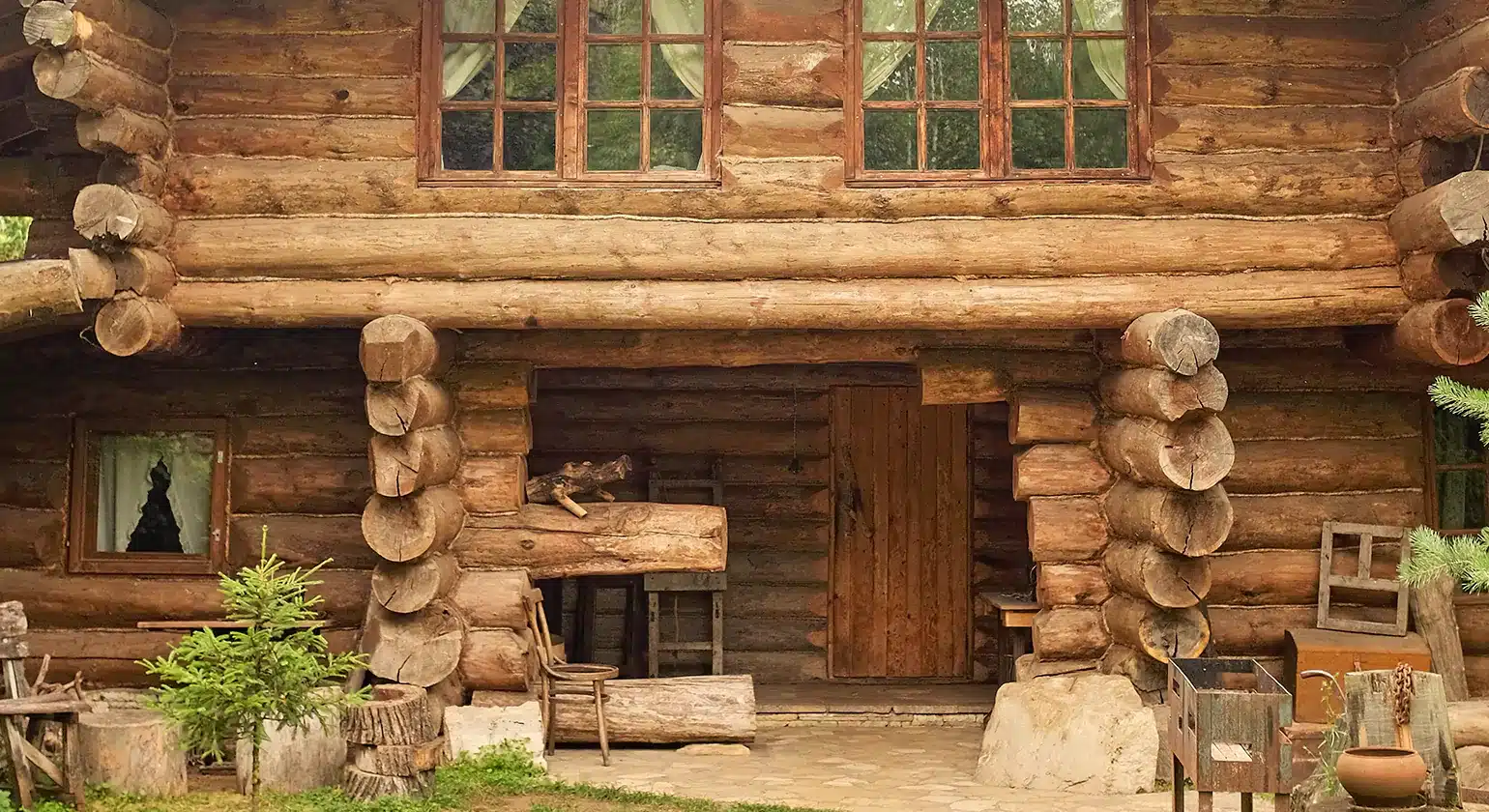
Purchasing an insulated log cabin requires research and a reliable supplier. Today, buyers can explore both online retailers and local builders, depending on their budget, timeline, and customization preferences.
Online Retailers and Local Builders
Online Retailers:
- eLogHomes, BZB Cabins, and Conestoga Log Cabins offer fully-insulated kits with online design tools.
- Amazon and specialist platforms occasionally carry prefabricated or modular cabin kits for quick delivery.
- These options often provide nationwide shipping, digital planning tools, and detailed installation instructions.
Local Builders:
- Working with a local builder allows for site-specific customizations, hands-on consultation, and better support during and after construction.
- Local expertise ensures your cabin complies with zoning regulations, weather conditions, and insulation codes.
Choosing between the two depends on your preference for convenience vs customization. Some buyers choose a hybrid route: purchasing a kit online and hiring a local contractor for assembly.
Questions to Ask Before Purchasing
Before buying, ask these critical questions:
- What is the R-value of the insulation used?
- Does the kit include moisture and vapor protection?
- Are utilities like plumbing, HVAC, and electrical pre-configured?
- Can the design be modified for local climate or elevation?
- What kind of foundation is recommended for your site?
These questions help ensure that the cabin not only meets your lifestyle needs but also performs efficiently in your specific environment.
Warranty and After-Sales Support
Always verify the manufacturer’s warranty coverage. A high-quality insulated log cabin kit should come with:
- Warranty on logs and structural elements (typically 10–25 years)
- Support for replacement parts and expansions
- Access to builder support or consultations during installation
Strong after-sales service is a sign of a trusted brand and adds peace of mind for long-term ownership.
Conclusion: Is an Insulated Log Cabin the Right Choice for You?
Insulated log cabins combine the timeless charm of rustic living with the high-performance standards of modern home construction. From exceptional year-round energy efficiency to superior durability against wind, fire, and moisture, these cabins are built to withstand the elements while minimizing utility costs and environmental impact. Whether you’re planning a permanent residence, a vacation home, or a remote office, insulated log cabins offer a healthy indoor environment, reduced maintenance, and long-term value—making them a smart investment for those seeking comfort, sustainability, and peace of mind in one package.
With various kit options, design customizations, and off-grid capabilities available, you can tailor an insulated log cabin to fit your lifestyle, location, and budget. As modern homeowners and nature enthusiasts continue to prioritize eco-friendly living and energy-conscious design, insulated log cabins have emerged as a practical and future-ready housing solution. If you’re looking for a low-maintenance, cost-effective, and resilient home that connects you with nature year-round, an insulated log cabin is not just a good option—it’s a wise and rewarding choice.
Learn More>>> Log Cabin Siding Ideas for a Cozy Timeless Look
FAQ's
1. What is an insulated log cabin?
An insulated log cabin is a timber-built structure enhanced with thermal insulation materials, offering improved energy efficiency, year-round comfort, and protection from extreme weather conditions compared to standard log cabins.
2. How energy-efficient are insulated log cabins?
Very energy-efficient. Thanks to the natural thermal mass of wood and added insulation materials, these cabins retain heat in winter and stay cool in summer. They often reduce heating and cooling costs by 25–40% compared to traditional homes.
3. Are insulated log cabins suitable for year-round living?
Yes. Properly insulated log cabins are designed for all-season use. They are warm during cold winters, cool during hot summers, and maintain consistent interior comfort levels.
4. What types of insulation are used in these cabins?
Insulated log cabins typically use natural insulating wood, rigid foam panels, mineral wool, and breathable membranes. External wall insulation and floor/roof insulation further enhance energy performance.
5. How do insulated log cabins compare to traditional homes?
Insulated log cabins are often more energy-efficient, faster to construct, and require less maintenance. While initial costs can vary, the long-term savings on utilities and repairs are significant.
6. Can I customize the design of my insulated log cabin?
Absolutely. Most cabin kits and builders offer customizable layouts, materials, finishes, and design features, including eco-friendly upgrades like solar panels and rainwater harvesting systems.

